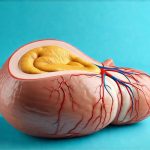The intricate connection between our gut and brain, often referred to as the “gut-brain axis,” is rapidly becoming one of the most exciting areas of modern scientific research. For years, we’ve understood that the brain sends signals to the gut, influencing digestion and motility. However, recent discoveries reveal a far more dynamic relationship: the gut itself profoundly impacts brain function, mood regulation, and even our perception of the world around us. This two-way communication system is largely orchestrated by the trillions of microorganisms residing in our digestive tract—collectively known as the gut microbiome. These aren’t simply passive inhabitants; they’re active participants in our physiological and psychological wellbeing, playing a crucial role in everything from immune function to neurotransmitter production.
The composition of your gut microbiome is unique, shaped by genetics, diet, lifestyle, and environmental factors like antibiotic use. A diverse and balanced microbiome generally correlates with better health outcomes, while imbalances (dysbiosis) have been linked to a growing number of chronic conditions – including anxiety, panic disorder, and sensory processing sensitivities. This article will explore how the gut microbiome influences these areas, shedding light on potential mechanisms and emerging research that’s reshaping our understanding of mental and neurological health. It’s important to remember this is an evolving field; we are still learning about the complexities of this system, but the evidence for a significant gut-brain connection is becoming increasingly robust. Understanding the role of gut inflammation in overall health is key here. https://vitagastro.com/understanding-the-role-of-gut-inflammation-in-nausea-and-poor-nutrient-uptake/
Sensory Processing & The Gut Microbiome
Sensory processing refers to how our brains receive, interpret, and respond to information from our senses – sight, sound, touch, taste, smell, and proprioception (body awareness). For some individuals, this process can be significantly different, leading to sensory sensitivities or sensory processing disorder. These differences manifest in a variety of ways, ranging from being overwhelmed by loud noises or bright lights to having difficulty with textures or social interactions. Traditionally, sensory processing issues were viewed primarily as neurological phenomena. However, emerging research suggests the gut microbiome plays a surprising role in modulating sensory experiences.
The connection stems partly from the influence of the microbiome on the vagus nerve – a major cranial nerve directly linking the gut to the brain. Microbial metabolites, short-chain fatty acids (SCFAs) produced during fiber fermentation, can interact with receptors along the vagus nerve, influencing neural signaling and ultimately impacting sensory perception. Moreover, certain gut bacteria are involved in producing neurotransmitters like serotonin and dopamine which are critical for regulating mood and processing stimuli. An imbalanced microbiome can disrupt this delicate balance, potentially contributing to heightened sensory awareness or a reduced threshold for sensory overload. Achieving gut microbiome diversity is often the first step towards improvement. https://vitagastro.com/the-role-of-gut-microbiome-diversity-in-stool-quality/
Furthermore, inflammation – often linked to dysbiosis – can significantly impact brain function, including the areas responsible for sensory integration. Chronic low-grade inflammation can alter neuronal connections and impair the brain’s ability to filter and process sensory input effectively. This is why dietary interventions aimed at reducing gut inflammation and promoting microbial diversity are increasingly being explored as potential strategies for managing sensory sensitivities. It’s not about eliminating stimuli, but rather improving the brain’s capacity to process those stimuli in a regulated manner.
The Role of Inflammation
Inflammation isn’t always bad; it’s a natural part of the immune response. However, chronic inflammation is detrimental to overall health and profoundly impacts mental wellbeing. Gut dysbiosis can trigger an inflammatory cascade within the body. When the gut barrier becomes compromised (often referred to as “leaky gut”), bacterial components and toxins can escape into the bloodstream, activating the immune system and leading to systemic inflammation.
- This chronic inflammation can directly impact brain function by altering neurotransmitter levels and disrupting synaptic plasticity – the ability of brain cells to form new connections.
- Inflammatory molecules released during this process can cross the blood-brain barrier, further exacerbating neuroinflammation.
- The resulting neuronal dysfunction can contribute to a variety of symptoms, including increased anxiety, emotional reactivity, and sensory hypersensitivity.
Addressing inflammation through dietary changes (reducing processed foods, sugar, and inflammatory fats), increasing fiber intake, and incorporating probiotic-rich foods is often recommended as part of a holistic approach to managing these issues. It’s also important to note that stress can exacerbate gut inflammation, creating a vicious cycle between the gut, brain, and immune system. Considering gut movement can aid in reducing this inflammation. https://vitagastro.com/the-role-of-gut-movement-in-preventing-bloating/
Gut Microbiome & Pain Perception
The connection between the gut microbiome and pain perception is becoming increasingly recognized. While often overlooked, chronic pain frequently co-occurs with anxiety and sensory sensitivities. The gut microbiome influences pain pathways in several ways. Microbial metabolites can modulate inflammatory responses that contribute to chronic pain conditions. Additionally, certain bacteria produce compounds that directly interact with nerve endings, influencing their sensitivity to pain signals.
A dysbiotic gut can lead to increased intestinal permeability, allowing for greater systemic inflammation and potentially amplifying pain signals. Furthermore, the microbiome impacts the hypothalamic-pituitary-adrenal (HPA) axis – the body’s primary stress response system. Dysregulation of the HPA axis is often seen in chronic pain sufferers and can contribute to heightened pain perception.
Dietary Strategies for Sensory Support
Diet plays a crucial role in shaping the gut microbiome and, consequently, sensory processing abilities. Here are some strategies:
- Increase Fiber Intake: Fiber feeds beneficial bacteria, promoting microbial diversity and SCFA production. Focus on whole grains, fruits, vegetables, legumes, and nuts.
- Fermented Foods: Incorporate fermented foods like yogurt (with live cultures), kefir, sauerkraut, kimchi, and kombucha to introduce probiotic bacteria into your gut.
- Limit Processed Foods & Sugar: These can disrupt the microbiome balance and contribute to inflammation.
- Hydration: Adequate hydration supports optimal digestion and microbial function.
Anxiety & Panic Triggers: A Gut Perspective
Anxiety and panic disorders are characterized by excessive fear, worry, and physical symptoms like racing heart, sweating, and shortness of breath. While traditionally treated with therapy and medication targeting the brain, a growing body of evidence suggests that gut health plays a significant role in these conditions. The “gut-brain axis” is particularly relevant here, as the microbiome directly influences neurotransmitter production and stress response systems.
The gut microbiome produces several key neurotransmitters involved in mood regulation, including serotonin (often called the “happy hormone”), dopamine, and GABA. Approximately 90% of serotonin is produced in the gut! Dysbiosis can disrupt this production, leading to imbalances that contribute to anxiety and depression. For instance, a lack of Bifidobacterium and Lactobacillus strains – commonly found in probiotic supplements – has been linked to increased anxiety symptoms. Furthermore, the microbiome influences the HPA axis, regulating cortisol levels (the stress hormone). An imbalanced gut can lead to an overactive HPA axis, resulting in chronic stress and heightened anxiety. Many find relief by focusing on gut-brain axis function. https://vitagastro.com/the-role-of-the-gut-brain-axis-in-chronic-nausea-bloating-and-emotional-digestion/
Panic attacks are often triggered by perceived threats, real or imagined. Gut dysbiosis can exacerbate this process by increasing visceral hypersensitivity – an increased awareness of bodily sensations. This means that normal physiological responses (like a slightly faster heartbeat) can be misinterpreted as signs of danger, triggering a panic attack. The gut microbiome’s influence on inflammation also plays a role; chronic inflammation can impair brain function and increase vulnerability to anxiety and panic.
It is vital to emphasize that addressing gut health isn’t a replacement for traditional mental healthcare but rather a complementary approach that may enhance treatment outcomes. Understanding gut microbiome balance is key here. https://vitagastro.com/gerd-and-the-role-of-gut-microbiome-balance/
This exploration of the gut-brain axis reveals a fascinating interplay between our internal microbial ecosystems and our psychological wellbeing. As research continues, we are likely to uncover even more intricate connections and develop targeted interventions to support both physical and mental health through microbiome modulation. Dietary changes and even fasting and refeeding can help restore balance. https://vitagastro.com/the-role-of-fasting-and-refeeding-in-digestive-balance/ Additionally, understanding gut inflammation can provide valuable insight. https://vitagastro.com/understanding-the-role-of-gut-inflammation-in-nausea-and-poor-nutrient-uptake/


















